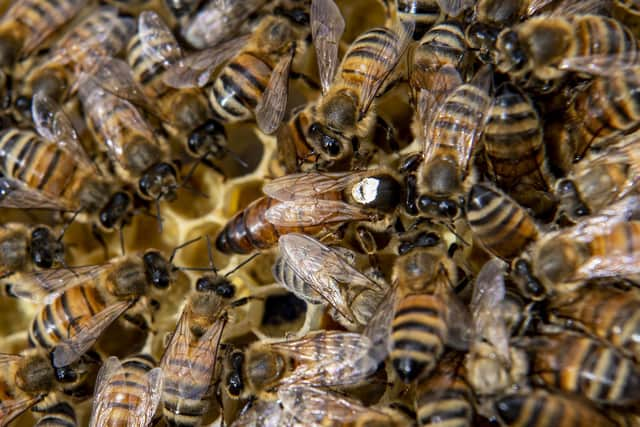Real problems behind the decline in UK’s bee population - Yorkshire Post Letters
I would like to correct some information in the article on bee population decline printed in the Friday May 20 edition of The Yorkshire Post.
I am a farmer and beekeeper so I can see both sides of the argument.
Advertisement
Hide AdAdvertisement
Hide AdThere are many factors affecting bee population, the main one, as mentioned, is varroa mite which has been reducing populations for 70 years now.


The main control measure is to put pyrethroid insecticides into the hive! There is a whole host of other bacterial and viral potential problems.
Climate change is also affecting bee behaviour. Warm weather during winter months means that bees will fly when there are no food sources available, using their stores in doing so. The claim that “more pesticides are being used in our country” is wrong! Pesticide use by weight halved between 2000 and 2016.
“Since we left the European Union, Brexit has actually meant that we are less strict about using pesticides” is also erroneous.
Advertisement
Hide AdAdvertisement
Hide AdThe rules on pesticide use have not changed, nor will they do, as the EU is a major export market for us and, therefore, we cannot afford not to abide by their rules.
The recent temporary derogation for the use of thiamethoxam as a seed dressing for sugar beet follows the lead of France which has allowed this product to be used for several years
now.
The evidence for damage to bee populations by neonicotinoid insecticides of which thiamethoxam is one, is very circumstantial, and no definite proof is available.
The use of thiamethoxam seed dressing for sugar beet seed is vital to prevent serious viral infections in the crop but its use is very unlikely to affect bees.
Advertisement
Hide AdAdvertisement
Hide AdThe quantities used as a seed dressing are very small and it is broken down naturally and will no longer control the aphid population in the crop after approximately six weeks.
The major factor however, is that bees do not enter a sugar beet crop. There are no flowers and no sources of nectar in the crop so bees do not go anywhere near it.
I hope this clears up some misconceptions. By the way, how many new houses have a garden? Most have a paved area to park two cars and a patio, but no flower beds!
